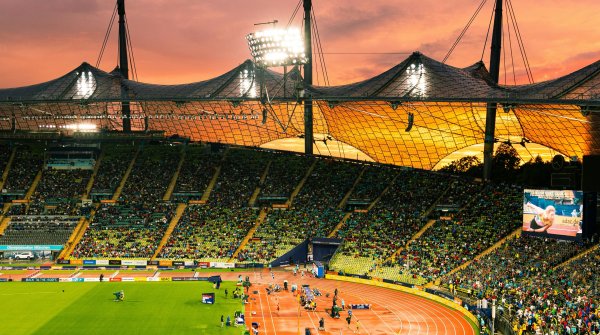
It wouldn't really be true to say that Germans are really athletic people. According to the national baseline study Winter Sports 2018, headed by winter sports expert Prof. Ralph Roth, only 60% of Germans actually do sports on a regular basis. However, of those 60 percent, 63.6 percent stated that they have done a winter sport at least once: this doesn't correspond with the not insignificant figure of 27.7 million people.
The study shows: winter sports enthusiasts have an above average income compared with the total population – alpine skiers even more so than cross-country skiers. The states with the most winter sports enthusiasts are North Rhine-Westphalia (5.81 million), Bavaria (5.01 million), Baden-Württemberg (4.16 million), and Lower Saxony (2.46 million).
The most popular sports in Germany are, in this order: alpine skiing, winter hiking, sledding/tobogganing, cross-country skiing, ski touring, snowboarding, and snowshoeing. During the holidays, people primarily go alpine skiing or winter hiking (just under 40% each), followed by sledding/tobogganing (26%), and cross-country skiing (22%).
Of the 27.7 million winter sports enthusiasts in Germany, 23.2 million were actually active in 2017 – on an average of 14.6 days. That corresponds to 339 million “Winter Sports Days” for the Germans, 103 million of these were in Alpine skiing and 92 million in cross-country skiing.
The destinations for day trips were usually in Germany (85%) and Austria (32%) The figures for holidays were 63 percent (Germany) and 43 percent (Austria). Despite the fact that there are now a great deal of alternative options, cars continue to be the means of transport of choice, far ahead of bus or train, at 77 percent.
While most winter sports enthusiasts still own their complete equipment (60% of the alpine skiers, 57% of the cross-country skiers), 40 and 43 percent respectively now rent their equipment. That means there is 5 percent less winter sports equipment that is owned by the users.
For holidays, the most important criteria continue to be snow safety, well prepared slopes/trails, and accommodation that is suitable for winter sports. In comparison to the last large study in 2012, the topic of snow safety has gained importance.
- There continues to be a stable and high level of demand for winter sports
- Different age groups have different levels of activity, older people do less winter sports
- The population of southern and eastern Germany, the areas closet to the winter sports regions, is most active
- Reasons given for not doing winter sports are primarily: no opportunities close to home, high costs, lack of sports partners, and fear of injuries
- Choosing winter sports is dependent on income, profession, and family situation
- In the 2016/17 season, more than 80 percent of the winter sports enthusiasts were active despite poor snow conditions
- Winter sports enthusiasm and snow adventures are a guarantee for lifelong sports activities.
 Sports BusinessThe future of the bike industry: 6 innovative bike stores
Sports BusinessThe future of the bike industry: 6 innovative bike stores
- ISPO awards
- Mountain sports
- Bike
- Design
- Retail
- Fitness
- Health
- ISPO Job Market
- ISPO Munich
- ISPO Shanghai
- Running
- Brands
- Sustainability
- Olympia
- OutDoor
- Promotion
- Sports Business
- ISPO Textrends
- Triathlon
- Water sports
- Winter sports
- eSports
- SportsTech
- OutDoor by ISPO
- Heroes
- Transformation
- Sport Fashion
- Urban Culture
- Challenges of a CEO
- Trade fairs
- Sports
- Find the Balance
- Product reviews
- Newsletter Exclusive Area
- Magazine





